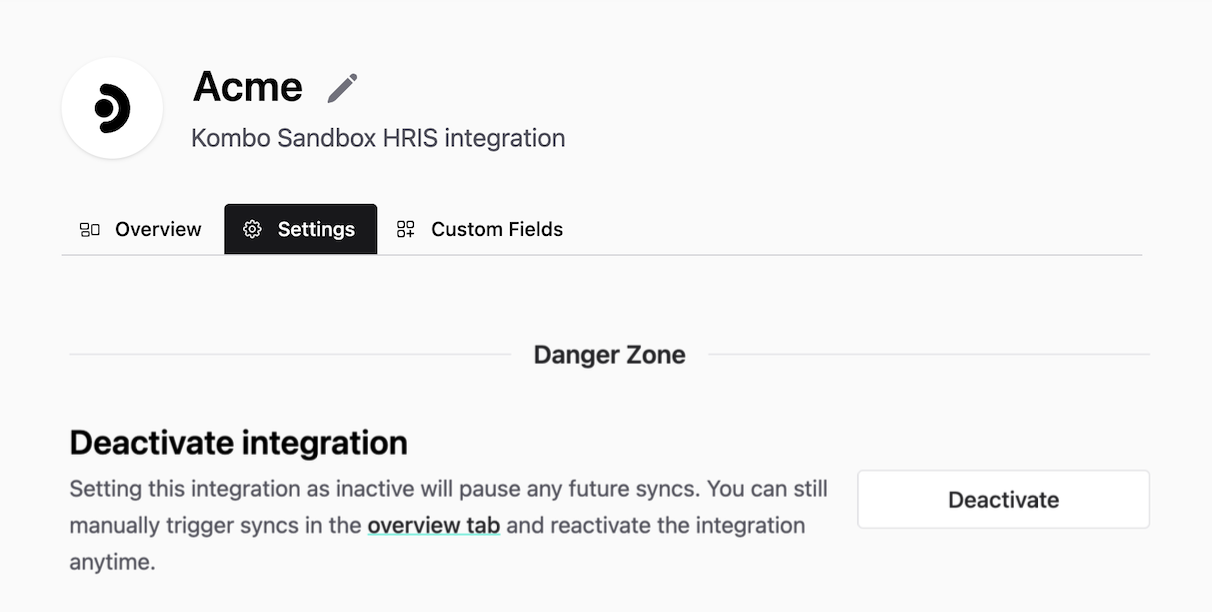Skip to main contentWhat is an Integration Status
After the connection flow has been completed, the integration will appear on
your integrations page.
Each integration has a status indicator informing you about the current
operational status.
API vs UI Integration States
The GET integration states endpoint returns a subset of the below-listed states, returning only those relating to the actual sync status.The integrations page expands on these states for a more human-readable interface.Possible Integration States
Active
The integration is running as expected, and data is being synced successfully.
Sync Failing
The last sync was not completed successfully. This can be the result of critical
errors, such as missing data, missing permissions, or the tool’s API having downtime.
Next steps:
- Check the logs of the sync to read the error message.
- Reach out to Kombo for help with resolving an issue.
Sync Has Warnings
The last sync was successful with warnings. This can be the result of smaller
unexpected behavior, such as a specific field not being able to be fetched.
Next steps:
- Check the logs of the sync to read the warning message.
- Reach out to Kombo for help with resolving an issue.
Quality Assurance
If we detect any issues while performing the first sync, the integration status
will automatically be set to quality assurance mode. Our engineering team will
be notified, and we will contact you once we have resolved the issue and
re-enabled the integration.
Authentication Failing
The last sync failed because the credentials could no longer authenticate the
data transfer. This can be the result of expired credentials.
Next steps:
Credentials Invalid
The status is moved from authentication failing to credentials invalid
if every sync over the last three days has failed due to authentication. The
integration will be automatically set to pause future syncs until new credentials are provided.
Next steps:
Setup
An integration in the setup state has been successfully connected but no filters have been configured yet.
Next steps:
Inactive
An inactive integration will no longer automatically sync data. You can set an
integration to active/inactive in the settings page of an integration as shown
below.
In your development environment, integrations will
be set to inactive if you did not send an API request to it over the past two
weeks. If desired, you can always reactivate it.
Next steps:
- Reactivate the integration in the settings page of the integration.
Deleted
You previously deleted the integration. You can read more about our deletion policy here. 








